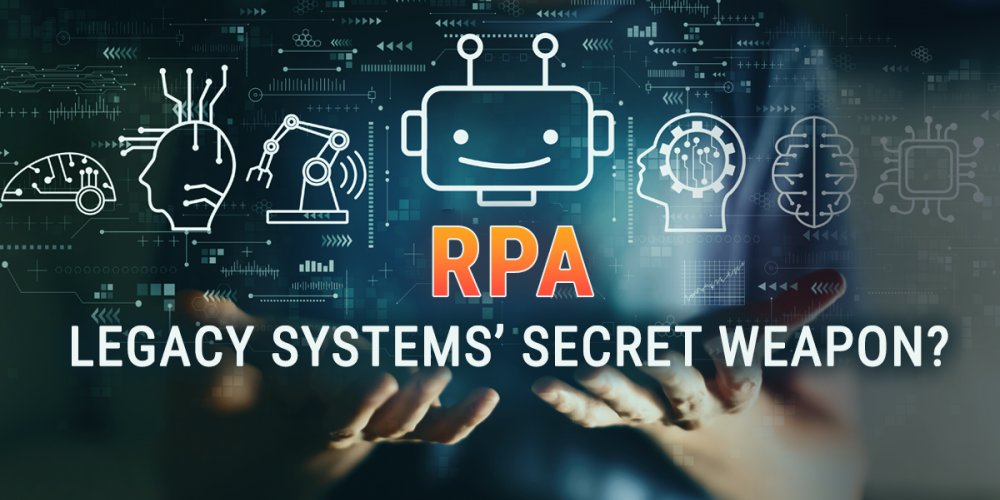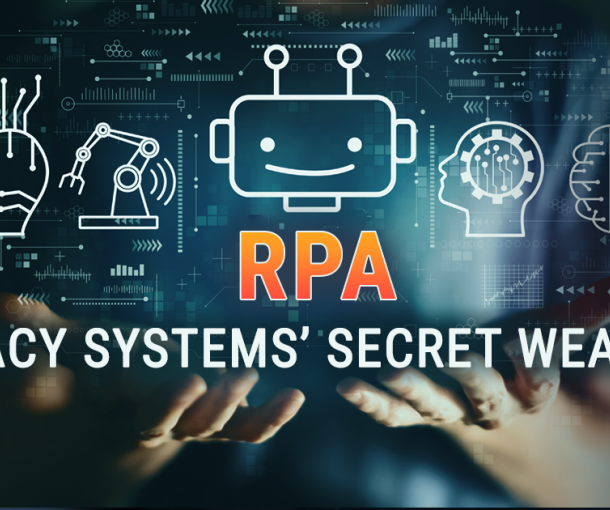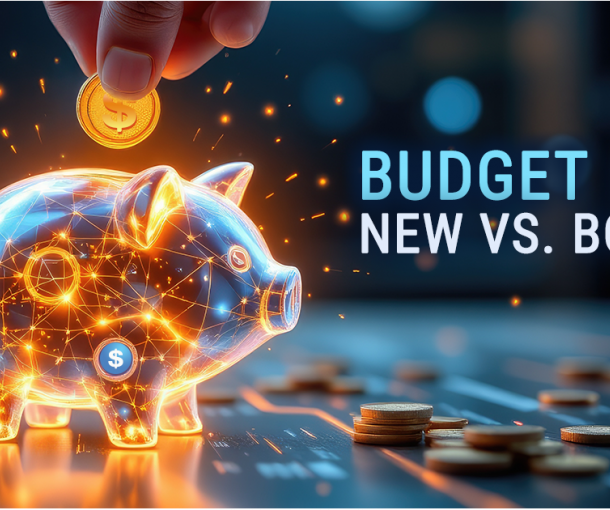
RPA: Legacy Systems’ Secret Weapon?
Why You Should Budget For it in 2026.
If modernizing your legacy software feels like rebuilding a castle while simultaneously holding your IT team and company infrastructure together from within its crumbling walls; RPA (Robotic Process Automation) may be the practical catapult you didn’t know you needed. Its not going to replace your castle, but it can build an automated set of drawbridges around it, giving you wins now and options for bigger bets later.
What Is RPA, Anyway?
- RPA or Robotic Process Automation is software or “bots” that mimic human actions, a digital employee per-se. Tasks ripe for RPA like entering data, clicking buttons, navigating screens, copying, and pasting are the very same mundane tasks employees’ dread.
- Exigently, these bots work via the existing UI (here’s hoping you have already done those updates) and don’t require APIs or rewrites. This makes RPA a low-risk option to automate repetitive, rule-based tasks without breaking the bank.
Think: RPA vs. RPA with Legacy. These are two vastly different scenarios. We are focusing on the later in this post because Legacy Systems are one of the biggest re-occurring headaches for our clients. With up to 80% of IT budget being spent on keeping these dinosaurs alive, cost-effective options have never been more critical.
CIO.com may have summarized it best — “With RPA, IT departments can work with business users to build automations for processes that involve multiple, disparate systems. So, instead of a full-stack application for a single department’s needs, RPA can help knit together the different applications in use across the enterprise to drive even higher levels of efficiency.”
RPA is a powerful enabler for tech leaders to tap into the abundance of knowledge that lives in the minds of corporate power legacy users.
Why RPA Matters in Legacy Migration
- Speed + Quick Value = Real Cost Savings: Bots can be deployed in weeks, not months. Before you undertake a pricey full legacy overhaul, RPA will allow you to realize quick wins, helping get finance on board with larger spends.
- Preservation: RPA lets you extract value now from legacy investments without risking a full rip and replace.
- Reduce Errors & Improve Compliance: Bots follow deterministic rules, they’re more consistent than humans and automatically log every step, making audits quicker, cleaner, and more accurate.
- Scalable Operations: Bots can run 24/7, meaning invoice processing, reconciliations and batch jobs can happen without extra FTEs (full time employee) or shifts.
RPA & AI – Cohabitation not Competition
- RPA + Document AI: Use AI (Optical Character Recognition(OCR) or Natural Language Processing(NLP) to extract data from unstructured sources (invoices, forms) and then hand structured output to bots.
- Intelligent Exception Handling: Generative AI or ML models can triage exceptions and flag complex cases for human review, freeing up your team’s time.
- Clean inputs = Better AI: Because RPA bots enforce consistency in data entry, they help generate clean, standardized data; exactly what AI models need. McKinsey sees RPA + AI as a key combo to modernize IT faster and cheaper.
Getting RPA into Your 2026 Budget, It’s Not Too Late
- Build A Pilot Business Case:
- Pick a high-volume, repeatable process (like AP, data sync, or runbook tasks).
- Estimate current labor cost + error rate + cycle time.
- Model a 40–60% reduction with RPA and calculate payoff over 6–12 months.
- Plan RPA + Roadmap Alignment:
- Use RPA as a “bridge” while you plan longer-term modernization (APIs, refactor, microservices).
- Align your pilot with your larger architectural goals; this demonstrates that RPA isn’t a stopgap, but a strategic stepping stone.
- Governance + Operations:
- Create a small RPA Center of Excellence (CoE) or partner with a managed vendor.
- Make sure you build in credentials management, bot versioning, and exception workflows from day one.
- Lock in Third-Party Support (A Powerful Option):
- Outsourcing RPA to a trusted vendor accelerates delivery. They bring expert bot pipelines, best practices, and scale.
- Use a hybrid model: partner for initial bots, then gradually build your internal CoE. That way, you retain ownership without slowing down.
Where to Use RPA Right Now
Where to start is often the biggest challenge, here are some proven, high-impact use cases for RPA in legacy environments:
- Terminal or green-screen application automation
- Invoice processing / AP automation
- Data reconciliation between siloed systems
- Regulatory reporting or batch jobs
- IT provisioning, help-desk tasks, or user onboarding
These are the “boring but high-leverage” processes that are perfect for bots, the kind of work that steals hours and morale from your high-value team members.
SM Research highlights stats and best-case use scenarios if you are looking for additional data to support your business case.
Think: Cross-system orchestration. Use RPA to weave together cloud apps, on-prem systems, and legacy UIs when full API integration isn’t feasible.
Why Waiting Increases the Risk of Falling Behind
- Legacy systems will continue to drain cash, time, and talent if not partially automated, even with a full rewrite planned. We recommend starting with a Software Audit to validate the immediate need.
- Putting off RPA means losing out on immediate ROI, higher error costs, and slower modernization momentum. Ask yourself this “Is putting it off contributing to innovation drag?”
- Without RPA, your data stays messy. Messy data means potential regulatory compliance issues, AI adoption friction and slower, less reliable analytics data.
- Your competitors who automate early will outpace you on efficiency and scale.
Next Steps: Legacy Experts & RPA
Partnering with an expert legacy-software modernization vendor, like STEP Software can speed up implementation, decrease risk and free up critical internal resources when implementing RPA.
Vendors like STEP understand the quirks, constraints, and brittle points of aging systems, they can design bots that are stable, resilient, and efficient without breaking critical workflows. Instead of your internal team burning time reverse-engineering decades-old code or navigating outdated UIs, an experienced partner brings proven automation patterns, prebuilt components, and battle-tested governance frameworks. This reduces deployment risk, shortens rollout timelines, helps avoid costly rework, ensuring RPA aligns with your long-term modernization goals.
The right vendor turns RPA from a risky DIY experiment into a predictable, scalable modernization strategy that delivers ROI faster and with far fewer operational surprises.
Final Thoughts
RPA isn’t a silver-bullet modernization fix, but it’s one of the smartest early bets you can make in 2026. It lets you realize immediate value from legacy systems, reduces risk, and generates clean, structured data for your broader AI and modernization ambitions. Automate now, scale confidently, and use those savings to fuel your next-gen architecture.
If you still have questions about RPA or other software initiatives, our Advisory Division offers a free 30-minute consultation to help get you on the right path.


